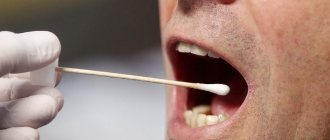We talk about how a DNA paternity test is performed. Today, this is the only way to determine with 100% certainty whether the alleged father is the biological (natural) father. Just 5 years ago, DNA paternity testing was carried out mainly by court decision (in the event that a man refused to pay alimony, arguing that his wife was potentially unfaithful).
Recently, more and more men want to do a DNA test in order to make sure that they are raising their child. This is due to the fact that, according to scientists, approximately every 13 man in the world is raising someone else’s child.
Therefore, in developed countries, a DNA paternity test has long been called the “test of paternal peace of mind.”
Why is a DNA paternity test performed?
A DNA paternity test can be carried out either by court order or voluntarily.
According to a court decision, DNA paternity testing is carried out if:
- after a divorce, a man refuses to pay alimony;
- a woman files for child support without being married to the child's biological father.
Moreover, if a man refuses to take a DNA test, in most cases he is automatically recognized as the father of the child.
Also, by court decision, a DNA test can be ordered if a child claims an inheritance, but his mother and father were not married.
A DNA paternity test can be performed without going to court if:
- a man suspects his wife of adultery and believes that the child is not his;
- the child’s father wants to make sure that he is the biological father;
- paternal relatives want to make sure that the child is really from their son (most often a DNA paternity test is carried out when registering an inheritance);
- the child does not look like his father and doubts arise about their relationship.
If the mother of the child insists on conducting a DNA paternity test, then she pays all material costs for the examination.
If the relationship is confirmed, these costs may be recovered from the child's father.
It is also necessary to take into account that the collection of material for DNA analysis by court decision differs from the standard one. For a DNA paternity test to have legal force, the collection of biological material must be carried out in the presence of witnesses and be recorded.
When can a DNA paternity test be performed?
There are no age restrictions for DNA testing. The study can even be carried out in utero.
During intrauterine testing, the mother's blood is taken, and then the baby's DNA is isolated from it in the laboratory. The study is absolutely safe, informative and reliable.
Reliability and reliability of DNA for paternity
Depending on the laboratory, the reliability of DNA paternity test results ranges from 99.9 percent to one hundred percent.
The information content of the test is determined by the peculiarities of the human genome and the inheritance of genetic material.
The human genome is represented by 46 chromosomes (23 pairs). Half of the genes are inherited from the father, and the other half from the mother. Chromosomes are combined in a chaotic manner, so the child may not resemble either the mother or the father. In the future, it often turns out that the child is more like his grandfather, great-grandmother, etc.
During a paternity test, the DNA profile of the father and the child is compared. Using special reagents, DNA is isolated from samples of the child and the alleged father. The DNA is then examined for matching loci (parts of chromosomes) in the DNA of the father and child.
Such genetic testing ensures the reliability of the results.
Features of the methodology
How to find out who the father of a child is without a DNA paternity test? Modern medicine can offer several basic methods for determining paternity.
All of them differ from each other in the degree of complexity and technique, in the materials used in the process, and, importantly, in the reliability of the results.
Typically, studies related to establishing paternity are carried out directly by geneticists.
To do this they can use the following methods:
- by date of conception, by gestational age;
- by blood group;
- by external signs;
- by the presence of genetic diseases;
- by DNA analysis.
Let's consider each of them separately.
By date of conception
In most cases, the need to establish paternity arises when a woman has had sexual relations with different men during one menstrual cycle.
How to do a paternity test without DNA? In such a situation, you can try to determine paternity in advance, even during pregnancy, by calculating the day on which there was the highest probability of conception - the day of ovulation.
A man who had intimate relations with a woman directly on this day, or shortly before or after it, is most likely the biological father of the child.
It is well known that women who have a regular menstrual cycle, ovulation (maximum probability of conception) usually occurs 14-15 days after the start of the menstrual cycle.
However, practical observations have shown that for most women, the day of maximum probability of conception cannot be determined accurately.
Moreover, establishing paternity by the date of conception can be greatly complicated by the fact that a man’s reproductive cells (spermatozoa) can “live” in a woman’s body for 3-5 days after sexual intercourse.
This means that conception can occur several days after sexual intercourse, so the real father of the child may be the man who had sexual relations with the woman even a few days before the expected date of conception.
Paternity can also be determined based on gestational age . It can be installed on an ultrasound, however, even the most advanced ultrasound equipment is not able to determine the absolutely exact date of conception.
Based on this, determining paternity by the possible date of conception or by the duration of pregnancy is impossible if a woman has had intimate relationships with different men over a short period of time.
By blood type
Experts count more than 20 different blood group systems . Most often, only 2 of them are used:
- Rh factor. Differences in the Rh factor of the blood.
- AB0 system. This is the system that is often meant when talking about “blood type”.
Both blood group systems are determined genetically, and therefore open up additional opportunities for establishing paternity.
The very principle of determining paternity by blood group and Rh factor is based on the relationship between the child’s blood parameters and the set of genes that were passed on to him by his mother and father.
At the same time, confirmation of paternity (in case of matching blood groups) does not provide even a 50% guarantee of correctness, however, in case of mismatch, the accuracy of the data reaches up to 99%.
You can also compare the Rh factor of the blood of the child and the intended father, but it is worth considering the following:
- It is quite possible that a man and woman with a positive Rh factor will have a baby with a negative factor.
- A man and a woman with a negative Rh factor will have a child with an exclusively negative factor.
External signs
How to prove paternity without DNA? As a rule, caring mothers and their friends are guided by the external similarity of the child and the alleged father.
However, they should take into account that the baby will not necessarily be born with the same facial features, hair color, and eyes as their parents.
The biological characteristics of people are such that children can inherit the characteristics of a grandfather, grandmother, great-grandfather or many other relatives.
The inconsistency of the method of establishing paternity based on the external similarity of a man and a child is confirmed by the fact of the existence of doubles - people who do not have any family connection, but at the same time, according to external data, they are very similar to each other.
Thus, based solely on the child’s similarity to the potential father, it is impossible to accurately determine their relationship.
Genetic diseases
What signs can be used to determine paternity without DNA?
Parents at the genetic level pass on to their children not only character and external characteristics, but also a number of genetic diseases caused by mutations in the gene.
If the mother in her family did not have an illness that appeared in the child, and the potential father or his immediate relatives suffer from this disease, then this fact is an indirect confirmation of paternity.
How is a DNA paternity test performed, where to take it?
A DNA test can be done in almost any private laboratory. To carry out DNA analysis, saliva, sperm, nails, hair, and blood are used.
In some cases, they may use cigarette butts, a toothbrush, a razor, or chewing gum with biomaterial residues.
In cases where DNA analysis is to confirm kinship with a deceased person, samples of hair, bone tissue or teeth of the deceased may be used according to a court decision after opening the grave.
The standard paternity test most often uses samples from buccal cells (the mucous membrane that lines the inside of the cheeks). To do this, rub a special brush along the inner surface of the cheeks for ten seconds. After this, the stick with the biological material is immersed in a sterile container, marked and sent for genetic research.
To increase the accuracy of the DNA analysis result, it is recommended to examine not only the genetic material of the alleged parent and child, but also the true parent (that is, the child’s mother).
How to do a DNA test at home?
Home testing has become popular recently. In this case, biological material is collected independently and then brought to the laboratory. However, such DNA analysis has no legal force.
Also, during self-collection of material, collection rules are often violated. Therefore, such tests are often not informative and only lead to a waste of money.
How to do a DNA test without the participation of the child's alleged father?
Such a DNA test can be done using the biological material of a brother, sister or parents of the child’s alleged father. However, the information content and reliability of such research is much lower.
Also, such studies rarely have legal force.
Determining the origin of a child
According to Art. 47 of the Family Code of the Russian Federation, legal ties providing for mutual rights and obligations between parents and their descendants are established in connection with the origin of the latter. Adults must educate and financially support their little ones. However, such a debt arises only in the case of consanguinity.
After confirmation of the relationship, the minor has the right to count on financial support from the new parent. Adult citizens can also take advantage of additional rights. Most often we are talking about the following advantages:
- collection of alimony payments:
- obtaining the right to inheritance;
- registration of benefits and allowances, for example, survivor's pension.
How much does a DNA paternity test cost?
The price of a DNA test depends on the urgency of obtaining results. And also on how many people are tested.
For example, the cost of a DNA paternity test involving only the child and the intended parent is about 9,000 rubles.
For each additional participant (mother, sisters and brothers of the child) you will have to pay from 3,000 rubles (for a DNA information test) to 6,000 rubles (for pre-trial genetic research).
To do a pre-trial genetic DNA test for a child and one intended parent costs about 12,000 rubles.
Obtaining a pre-trial genetic conclusion for a child, unconditional and intended parent costs about 17,000 rubles.
Prenatal DNA testing costs more.
The time frame for receiving results can range from 5 to 14 days. A standard DNA test requires results within 10-14 days. An urgent study (for the baby and the intended parent) can be carried out in 5-7 days. An urgent DNA test for a baby, intended and unconditional parent will take 7-10 days.
Last modified: January 2021
Life circumstances make one doubt that the baby’s parent has been identified correctly. In addition to the expensive DNA test, there are simpler and less expensive options for determining paternity by blood type. Moreover, the study is carried out not only on the group, but also on the Rh factor, as well as the degree of probability of the child having one or another group.
Doubts can arise even in a strong marriage if the child bears little resemblance to his father or there are other reasons to believe that there may be another contender for paternity. Knowledge of the rules for conducting an audit and the ability to use tables will help clarify the situation and eliminate all suspicions.
Establishing paternity in court
The rules for determining paternity in court are enshrined in the Family Code of the Russian Federation. In court, the origin of a child is established when the child was born to parents who are not married to each other and when there is no joint statement from the parents or a statement from the father of the child.
The statement of claim is filed with the district (city) court, which schedules a hearing within a month. Along with the statement of claim, the following must be submitted to the court: the child’s birth certificate, a receipt for payment of the state fee and documentary evidence of the relationship between the child and the putative father.
The court considers an application to establish paternity filed by one of the parents, a guardian (trustee) of the child or a person who is dependent on the child, as well as upon the application of the child himself upon reaching the age of majority. In court, any evidence that reliably confirms the origin of the child from a specific person is examined; the relevant documents of the parents and official documents certifying paternity are examined. The main document here is the expert’s conclusion with a positive DNA test result.
If the court makes a decision to establish paternity, it must enter into force within 10 days. If an appeal has not been filed, the court decision is submitted to the registry office to obtain the child’s birth certificate, where information about the father will be recorded. If the court accepts the appeal, its decision is suspended until a ruling on the appeal is made.
Features of establishing paternity by blood group
Many couples live without official registration of their relationship. As a result, when a child appears, the spouses are not bound by any obligations before the law, and therefore there is no reason to demand funds for raising the child.
The most accurate way to identify kinship, used in judicial practice as irrefutable evidence of paternity, is DNA testing.
In order to file a claim for alimony and demand forced financial support when the father himself does not express a desire to take care of the baby, paternity will need to be established in court by presenting a DNA examination as evidence. However, this method is very expensive (in some cases up to 90 thousand rubles).
Modern medical technologies in the field of genetics have made it possible to once and for all get rid of doubts about one’s own relationship, or to establish who is the biological father when other determination options are impossible.
If a family problem can be resolved by ruling out paternity with a particular person, less expensive tests can be used by comparing the blood types of potential relatives.
There are also less complicated and inexpensive ways to try to establish paternity by blood type, i.e. by comparing the group and rhesus of both adults and the baby.
How to find out without DNA analysis whether your child is or not
Establishing paternity consists of a number of methods that clarify the relationship between a child and a parent.
The most accurate option is a DNA test. However, it is not always possible to take biological samples.
Therefore, methods for determining paternity without DNA analysis are still relevant today.
Ways to clarify The issue of establishing paternity is relevant both for harmonious family relationships and in legal proceedings.
There are a number of common methods that allow you to check the fact of blood ties:
- genetic diseases.
- date of conception;
- by external signs;
- blood group and Rh factor;
External signs This method of confirming or disproving paternity is not accurate or reliable.
Facts such as external similarity, calculations in terms of dates, coincidence of blood type do not carry an evidentiary basis and can be used by parents only as moral reassurance, so to speak. All methods of determining paternity indicated in this article without using a DNA test contain no more than 50% of the truthful information. If the mother or father of the baby has serious doubts, then the best option is an officially confirmed DNA test result.
The probability of a reliable laboratory verdict is 99.9 percent. Since the state only recognizes documented evidence of paternity, the child has full rights (for example, the right to inheritance) that can be associated with the parent, regardless of who his biological father is.
How blood type information is used to establish paternity
If a blood test is carried out, there are two testing options:
- according to the AVO system; by Rh factor.
Blood type is determined by the ABO gene, which exists in three variants: A, B, 0. There is a possibility of one of the following combinations appearing; A0, AB, AA, OO, VO, BB. By correlating combinations of genes with a particular group, the following is established:
- first gr. (00); second gr. (A0, AA); third (B0, BB); fourth (AB).
Using the following table, it is easy to find the options that can result from inheriting the genes of the father and mother:
| Mother's blood group/father's blood group | I | II | III | IV |
| I | 1 | 1 or 2 | 1 or 3 | 2 or 3 |
| II | 1 or 2 | 1 or 2 | Any | 2,3,4 |
| III | 1 or 3 | Any | 1 or 3 | 2,3,4 |
| IV | 2 or 3 | 2,3,4 | 2,3,4 | 2,3,4 |
Based on the information in the table, we can say with certainty that parents with the first blood group should have a baby with the same group, and for parents with the second and third blood groups, the test will not determine the relationship, since the child can receive any blood group. At the same time, a father with the fourth blood group cannot produce an heir with the first blood group.
When trying to understand the presence of a relationship, it is important to know your exact information, having first checked it with a medical institution. Based on knowing only the blood type, it is impossible to predict in advance what the child will inherit. It is important to remember that the admissibility of paternity does not mean that this particular candidate, who is a carrier of a certain group, is a parent.
How to determine paternity by external signs
› Establishing kinship based on appearance / Zvyagin V.N., Galitskaya O.I., Diordiev V.E.
// Mat. VI All-Russian Congress of Forensic Physicians. - M.-Tyumen, 2005. - P. 104. bibliographic description: Establishing kinship based on appearance / Zvyagin V.N., Galitskaya O.I., Diordiev V.E.
// Mat. VI All-Russian Congress of Forensic Physicians. - M.-Tyumen, 2005. - P. 104. code for inserting into the forum: If the portrait identification of a person is quite well known, then the establishment of kinship based on appearance is practically absent in domestic forensic medicine. Literary data on family resemblance of appearance traits, as a rule, relate to examinations of disputed paternity or the diagnosis of twins.
Only the work [1-7] deserves some interest. About 1.1 - 1.2% of all births are twins.
About 1/3 of twins are identical (IZ).
Diagnosis of identical couples is made on the basis of similarity in a number of hereditarily determined characteristics: concordance of the structure and color of the iris, shape of the nose, mouth, shape and size of teeth, papillary lines, body size, blood type, etc. OB partners are always the same sex, sometimes so similar externally, which are indistinguishable even to parents. Fraternal twins (DT) are no more similar to each other in their hereditary properties than ordinary brothers and sisters.
The role of heritability (h2) in the variability of quantitative traits in twins is quite high [2]: body weight - 0.69; body height - 0.88; head length - 0.72; zygomatic width - 0.60; nose width - 0.66; face height - 0.74.
Rh factor check
If it is not possible to accurately confirm the possibility of paternity based on blood type, combinations of Rh combinations can be considered. This method does not allow one to accurately identify the father who is a carrier of a certain Rh factor, but with a high degree of probability it excludes certain applicants with unsuitable Rh factors.
For example, if both spouses have a positive Rh factor, this does not exclude the possibility of having a common child with a negative Rh factor. But if both parents are carriers of a negative Rh factor, the birth of a child with a positive Rh factor is excluded.
The following information will help exclude paternity if the child's Rh factor does not match:
- mother and father have a Rh factor “+” - the child can carry any of the options; parents have different Rh factors - the chances for any type of Rh factor are equal; both parents have a Rh factor “-” - the child is 100% likely to become a carrier of the same type.
Test for legal paternity establishment
By conducting a blood test, you can confidently exclude the possibility of paternity if the child’s blood type and Rh factor do not correspond to possible combinations of parental indicators. Thus, such tests can only establish whether the relationship of specific citizens can be asserted or excluded. The methods described above are not suitable for accurately confirming a child’s heredity, but analysis of parental DNA will provide an accurate confirmation of relationship with a probability of 99.99%.
Unfortunately, the instability of couples living in a civil or official marriage increasingly leads to the need to check the presence of family ties. Often, a DNA test is used in court to officially recognize a specific person as the father and to collect child support from him.
Typically, a DNA test performed non-invasively is completely painless and requires no prior preparation. It’s another matter if DNA analysis is required during pregnancy and involves the use of an invasive method. In this case, there is a certain risk to the fetus, and it can only be performed during a certain period of pregnancy.
Within 5-7 days, if the test is urgently performed, the parents receive a medical report, which can then be used by official authorities (when determining the payer of alimony, establishing the status of the father), or to resolve intra-family conflicts, proving the relationship of the spouses with the newborn.
Everyone is free to choose their own research methods, because it is better to know the true state of things than to live life in doubt and mistrust.
Need some advice? directly on the site. All consultations are free / The quality and completeness of the lawyer’s response depends on how completely and clearly you describe your problem:
Article published: 2018-03-19
Rating: 5 out of 5
Questions of biological kinship are relevant at all times, and most often there is a need to accurately determine the father of the child. Modern technologies make it possible to find out who the father of a child is during pregnancy by conducting a DNA test.
This method is the only one that allows you to determine paternity before the baby is born . At the same time, its accuracy and reliability does not raise any doubts and is confirmed by successful world practice.
Obtaining a certificate of paternity
If the court decision is positive, the following is provided to the registry office: a passport, a child’s birth certificate, a valid court decision to establish paternity, a receipt for payment of the state fee. The registry office makes a record of establishing paternity and presents a certificate to the parents.
Recognition of paternity means the onset of all legal consequences, since the child will be subject to all civil and family rights, for example, the right to inherit from a recognized father (in this case, the presence of a biological father does not matter).
How to find out who the father is during pregnancy
A genetic examination can be carried out after the birth of a child to establish a relationship by DNA testing in a specialized laboratory. To do this, samples of buccal epithelium from the inner surface of the cheek are taken from the baby and the expected father. This procedure is simple, painless and does not pose any danger . After comparing DNA sections, the expert makes a conclusion about the degree of relationship; the result of such a test is accurate and reliable.
Is it possible to recognize the father during pregnancy and how are samples of biomaterial taken if the child is in the womb? Modern technologies make it possible to establish paternity even before the birth of a child . Today, two methods are used for this purpose:
Invasive - involves intervention in the uterine cavity to collect biomaterial, and therefore carries certain risks for the fetus and mother. These methods include:
- Analysis of chorionic villi. To establish relationships and identify genetic diseases, particles of the membrane surrounding the fetus, which has genetic identity with the fetus, are examined. The sample is taken by puncture during the period from 9 to 12 weeks of pregnancy .
- Study of amniotic fluid - amniotic fluid. Using a long needle, the abdominal wall is pierced and the required amount of fluid is removed. Conducted from 14 to 20 weeks of pregnancy .
- Cordocentesis - analysis of umbilical cord blood. Using a needle, 1-5 ml of blood is drawn. The period of implementation is from 18 to 24 weeks . The most appropriate moment is starting from 21 weeks.
Non-invasive - performed on the basis of the venous blood of a pregnant woman. With this method, a biopsy is not performed, so it is absolutely safe for mother and child , there is no risk of miscarriage or complications.
How can you check paternity using tests?
Paternity can be determined using much more scientific methods.
By blood type
Let's figure out how to determine paternity by blood group, how to determine kinship using a blood group table, and whether it is possible to determine paternity by blood group in general.
There are more than 20 blood group systems in the world, but only two are most often used:
- AB0 system.
- Rh factor.
Both systems are set genetically, which means they are passed on from parents to children and allow paternity to be determined. It is believed that the child’s blood parameters depend on the genes passed on to him by his mother and father.
There are four blood groups in the ABO system:
- I or 0 (zero);
- II – A;
- III – B;
- IV – AB.
They differ in the presence of antibodies of one type or another in human blood. For example, in the blood of group I, both types of antibodies are absent, a person with group II has antibodies A, with group III - only antibodies B, and in group IV there are both types of antibodies.
Determining paternity by blood group is not an entirely accurate method, although it is quite reliable. The method is used as a preliminary study before a DNA test.
Example. Blood test of Mr. A.F. confirmed his fears and ruled out paternity, since the alleged father had blood type IV, and the child had type I.
There is also a table that allows you to determine paternity by blood group.
By Rh factor
According to the Rh factor system, two groups are distinguished: Rh-negative (Rh-) and Rh-positive (Rh+). Their difference is that one group has specific antibodies, while the other does not.
It is possible to try to establish paternity using the Rh factor, but the result will be less reliable than based on the AB0 system. The fact is that an Rh-positive mother and father can have a child with Rh-negative blood. But for Rh negative parents, the baby will always have a negative Rh factor.
It is possible to unequivocally state that a man is not the father of a child only when both mother and father have a negative Rh factor, and the heir is positive.
It is important to understand that a negative result of determining paternity by group will be 99% accurate, but a positive result is almost insignificant. In addition, the analysis can be carried out only after the birth of the child.
Both tests have approximately equal legal force, since neither one nor the second gives a 100% answer to the question. One way or another, if you want to put all doubts to rest, you will have to resort to a DNA test.
DNA paternity test
Let's figure out how to test DNA for paternity. A genealogical DNA test examines parts of the genome of the people being tested to determine paternity (relatedness).
There are three types of DNA tests:
- autosomal (atDNA);
- mitochondrial (mtDNA);
- Y-chromosomal (Y-DNA).
The autosomal test makes it possible to obtain data on all branches of the pedigree.
The Y-DNA test is performed only on a man and examines his paternal line.
The mtDNA test examines the direct maternal line of both a man and a woman.
A DNA test is the only laboratory test whose results are legally binding and can be considered by a court as proof of paternity. This is the main difference between a DNA test and a blood type paternity test.
What are the possible results and when is paternity recognized?
Establishing paternity by DNA is based on the duality of the child's DNA: it is both unique and combines parts of the DNA of mom and dad. The test results can not only reveal the maternal and paternal DNA components, but also trace the transmission of certain DNA fragments in mother-child or father-child pairs.
Paternity is considered confirmed if the DNA fragments in pairs match almost completely (99%).
What materials can be taken for analysis
To perform a DNA test, you must provide a DNA sample. Most often, to take a sample, a specialist will scrape the cheeks with a swab - this is the most common diagnostic method. But it is also possible to collect saliva, hair, nails, pieces of flesh and any other biomaterial. In this matter, everything depends on the complexity of the situation being studied.
Example. Mrs. P.E. claimed part of the inheritance of the deceased Mr. D.W., because, according to her, which no one could confirm, the son of Mrs. P.E. - biological son of D.W. and is entitled to a portion of his father's inheritance. To conduct a DNA test to establish paternity, skin particles found by forensic scientists on the clothing of the deceased Mr. D.W. were used.
Stages of DNA analysis to determine paternity
If DNA paternity testing is carried out through the court, follow this algorithm:
- File a civil claim in court - there you will request in writing to order a DNA test to establish paternity.
- The court issues you a decree ordering an examination.
- You will be officially assigned a place and time to collect samples for DNA testing.
The results of genetic testing are not handed out, but sent to court.
Methods for DNA testing during pregnancy
Paternity can be established in the early stages of pregnancy; this diagnosis is called prenatal. The procedure involves the collection of biomaterial from the fetus; it is carried out in a special medical facility and carries risks of complications.
How to obtain the material:
- Chorionic villus biopsy. The material is taken from 9 to 12 weeks of pregnancy. The specialist performs this complex manipulation under ultrasound control. Using a puncture in the mother's abdominal wall, the doctor removes material from the fetal membrane.
- Amniocentesis. At 14-20 weeks of pregnancy, the doctor may take amniotic fluid to examine it. They are also taken in through a puncture in the mother's anterior abdominal wall.
- Cordocentesis or blood sampling from the umbilical cord vessels. This procedure is carried out for a period of more than 18-20 weeks.
Non-invasive method
A paternity test is carried out on the basis of venous blood from the expectant mother and the putative father. In this case, the freely circulating fetal DNA that a pregnant woman has in her blood is examined.
DNA test to determine the father of a child during pregnancy
Thus, by DNA testing using a woman’s venous blood, it is possible to find out who the father of the child is during pregnancy, without exposing the mother and fetus to risks . High accuracy and safety are the main advantages of such research.
Testing is carried out as follows:
- samples of biomaterial are taken;
- DNA sections of the fetus are isolated from the mother's material;
- in laboratory conditions, alleles in the loci of the fetus and the man are compared;
- An expert opinion is drawn up.
Testing is carried out starting from the seventh week of pregnancy . During this period, the child’s DNA can be extracted from it. The analysis will require 20.0 ml of the woman’s blood. Samples of buccal epithelium or any other biological material are taken from the putative father - skin particles, hair, nails, toothbrush, earwax, battle, etc.
The laboratory is conducting research on SNP markers. If the fetus is male, then the Y chromosome, which is passed on to the child from the father, is analyzed. If the fetus is female, then both chromosomes are analyzed to determine identity with the father's markers.
The test results are recorded on a special form, indicating the date, signature of the laboratory director and stamps. The study allows us to establish the fact of biological relationship with a probability of 99.999% . In case of a negative result, the probability is 100.0%.
The non-invasive research technique is not used if the woman or man had a blood transfusion or a bone marrow transplant six months before the test.
How to find out who the father of a child is during pregnancy in the DTL laboratory
DNA testing is possible only in a certified laboratory, with experienced specialists, high-tech equipment and reagents. Molecular Genetics has all the necessary resources and offers testing using advanced, high-precision techniques. We guarantee each client absolute accuracy of results , confidentiality and affordable prices for our services.
You can submit samples of biomaterial at our Center in St. Petersburg at a time convenient for you. We invite residents of other cities to visit the official representative offices of our Center. Since we work with each client individually , you can clarify the details and get a free consultation over the phone.
DNA (deoxyribonucleic acid) is a molecule in the cell nucleus and a storehouse of genetic data for every living creature, in which all the characteristics of the organism are recorded. A person also has DNA, and, as a rule, he receives 50% of it from his biological mother, and the remaining 50% from his biological father. A paternity test involves comparing parts of the DNA of the child and the potential father.
To carry out the test, it is necessary to examine the biological material of the child, his natural mother and the putative father. Similar studies are carried out in the laboratories of specialized clinics, where the percentage match of sequential DNA combinations of alleged relatives is determined.
The coincidence in all DNA fragments of the child and the man means that the man is 99% likely to be the father of this baby. If there are two or more discrepancies, paternity is considered unconfirmed, and the man is excluded from the applicants.
Such a test can be carried out even at the stage of pregnancy, when the child is still in the womb (or surrogate mother). Of course, it is better to carry out such a test after the birth of the baby, avoiding such intervention, because it carries a serious threat of infection of the amniotic sac or the fetus itself and, in addition, can provoke a miscarriage or premature birth. However, in some emergency cases (when, for example, a woman doubts who fathered the child, or the alleged father believes that he was not involved in its birth), paternity is established without fail. If a man, and not a woman, insists on an examination, then the test can be carried out, but only in court.
Today, only a DNA test is a scientifically based and provable method of establishing kinship. The results of other methods and tests during pregnancy, unfortunately, are still imperfect or do not guarantee their accuracy. So, for example, if a woman, after her last menstruation, had several unprotected sexual contacts with different men, then presumptive paternity can be established by calculation, that is, the most probable time of conception is the period of ovulation (middle of the cycle) - approximately 14-15 days after menstruation. In this case, most likely, the father of the child will be the man with whom he had sexual intercourse during this particular period of time. However, this method cannot be reliable if:
- the woman has not monitored her menstrual cycle for the past six months, noting the day of ovulation;
- if in the middle of ovulation (+/- 2 days) there was still more than 1 sexual partner, since in the moist alkaline environment of the uterus and fallopian tubes, sperm is able to maintain its fertilizing ability for 2-3 days, or even longer.
What signs can be used to determine paternity without DNA?
> >
Unfortunately, sometimes there are situations when a woman cannot say with one hundred percent certainty that a particular man is the biological father of her child. Of course, a definite answer to this question can be obtained through a medical DNA test, but not everyone has the desire or financial ability to conduct it. Thus, the price of genetic tests to determine paternity remains high in 2021, even despite the high level of development of genetics.
In addition, the court does not in all cases agree to grant the request regarding this examination. Are there other proven ways to determine paternity without DNA? Yes, however, the result of such methods can be called by no means the most reliable, but only approximate.
To establish paternity, it is necessary to carry out a series of procedures aimed directly at determining the relationship between the child and the man who is presumably his biological father. When is paternity establishment necessary?
The need for this arises if it is necessary to refute or confirm the relationship. Thus, there are 2 ways to legally resolve this issue: voluntary - out-of-court; judicial.
DNA tests to establish paternity during pregnancy
Modern medicine has two methods of conducting a DNA test during pregnancy - non-invasive and invasive, which differ in that the first is carried out without intervention in the uterine cavity of a pregnant woman, and the second is carried out using special equipment with penetration inside the uterus.
How is a DNA paternity test performed using a non-invasive method?
For more accurate results of this testing method, it is used at 10-16 weeks of pregnancy, and it is the safest for the expectant mother and her baby.
Specialized clinics or laboratories involved in DNA testing have high-precision equipment and reagents that make it possible to determine paternity with high accuracy (up to 99.9%) even during pregnancy, and for this it is enough to analyze the venous blood of the alleged father of the child (10 ml) and mother (20 ml). Blood can be collected at any medical institution as for a routine blood test, and then sent to a specialized laboratory. More blood is taken from the mother, since fetal DNA is isolated from it in the form of fragments.
The high percentage probability of the test in its conclusion means that the alleged father and child among several thousand random individuals have the same genetic markers.
However, a non-invasive testing method will be unreliable if one of the parents received a bone marrow transplant or blood transfusion less than six months before testing.
How can you determine paternity without DNA?
»» How to determine paternity without DNA In some cases, a woman cannot name the father of the child with firm certainty, so a natural question arises - “who is the father of the child without resorting to laboratory DNA testing”?
Determining paternity in the current situation becomes somewhat more complicated, although there is a possibility of obtaining an answer to the question posed.
Paternity is a real event that confirms the biological, social origin of a child from a specific man.
It is confirmed by an entry in the civil status act carried out by the state civil registry office at the birth of the child. According to the Family Code, the father of the child is considered to be the woman’s husband if a child is born:
- From spouses who are in an official marriage union. Within 300 days from the date of divorce or the marriage being regarded as invalid, after the husband. Unless there are other facts proving that the child was born from a third party.
The paternity of a person cohabiting with the child’s mother without marriage can be established when the child’s parents submit a common paternity to the civil registry office.
The question of how to find out paternity without a DNA test can be resolved in various ways according to the norms of the legislative acts in force in the Federation.
These include: premature death of the child's mother; recognition by the mother during a medical examination to bear responsibility for her actions;
How is an invasive paternity test performed during pregnancy?
An invasive method of DNA testing involves the removal of tissue samples, biological fluids, and blood by penetrating the natural external barriers of the mother and fetus. The procedure is carried out only in a specialized medical facility.
If you are faced with a difficult choice and want to find out who the father of your unborn child is, the interactive Helper will help you figure it out.
If you have a short sentence, then in order to narrow down the circle of paternity suspects as much as possible, you will have to remember a few numbers. First, you need to remember when your last period started. And secondly, what is your average cycle (the period between the beginning of the penultimate and the beginning of the last menstruation). Fill out the form and click “Next”.
A little theory for a better understanding of the logic of the interactive Prompt.
The most favorable day for conception is the day of ovulation. On this day the egg is released. And if unprotected sexual intercourse occurs on the day of ovulation, the sperm, full of strength, rush to meet the “fresh” egg.
The life of an unfertilized egg ends in a couple of days. Therefore, sex two days after ovulation rarely leads to pregnancy. Spermatozoa also have limitless powers; they can “wait” for an egg for five days, no more. For this reason, unprotected intercourse more than five days before ovulation is also considered relatively “safe.” The calendar method of contraception (not very reliable) is based on this.
Who is the child's father?
It is possible to determine with absolute certainty whether a man is the father of a child using a DNA test. But this can only be done when the baby is born.
How can you find out who the father of a child is without a DNA test and even during pregnancy? You can ask the doctor after your next examination or ultrasound.
If you remember the day the last menstruation began and the average length of the cycle, you can try to determine who the child is from. This method does not provide an absolute guarantee, but it often helps to understand the origin of pregnancy.
Calculate gestational age
First period after childbirth
Calculate due date using menstruation (calculator)
Date of birth calculator based on date of conception
Ovulation - online calculator
Baby gender calculator. Who was to be born?
in the section “Pregnancy calculators”:
Help me please! My period was on 11/16/20 and ended on 11/20/20 NP was 21.11 22.11 and 23.11. Then there was also NyapA 28.11 29.11 30.11. I went for an ultrasound on 12/19/20 and they said I was 2 weeks pregnant! From whom can I be pregnant? From the first NP or from the second?
Hello. My period started on 10/7 and ended on 10/10. Cycle 23 days. But 12 had sex with one guy. I broke up with him. And 17 and 20 were already with someone else. I don't know who I'm pregnant with
Hello! Help please. I have a boyfriend and I'm pregnant. IBO is always with a guy. The last menstruation was 09.19.2020 And on 10.09.2020 I had an IPA with another person. I am pregnant. From whom could it be? Yes, I'm scum, I'm stupid. It just happened that way. Please help me figure it out!
Hello, from 03.13-14.03.20 I had PA with a guy, menstruation began from 03.18.20-03.20.20 (cycle on average 28 days), from 03.23-24.03 I had PA with another guy. On May 29, Ktr-31 mm is set to 10 Week 4 days, 08/09/20 according to the calendar shows 21 weeks 3 days. Who could be the father?
Hello, please tell me 06/23/2020 was the first day of my last period and on the same day I was not protected by PA. The ultrasound is now 5 weeks late in pregnancy. I can’t understand when conception occurred, if ovulation is supposed to be on July 7th?
I have been married for 7 years and all this time I believed that I married for love and was happy in my marriage. But it turned out that this was not the case.
Before the New Year, my beloved husband came home from work angry, threw papers at me and said that he was filing for divorce! In the first seconds, a whirlwind of thoughts rushed through me and my little cockroaches ran frantically and searched in various folders and closets of my brain for the answer to the main question “Why?”.
As it turned out, my hubby went crazy and did a DNA test, which showed that our first-grader, my beloved daughter, was not his child.
She's had a good time, you say, and it's also her man's fault! But here the story is a little different. Let me tell you what happened 7 years ago.
I’m 17, I, a modest parent’s daughter, finally find myself “free” - in a student dormitory. I want to warn you right away that I didn’t rush into all seriousness; for me, hanging out until 12 o’clock at night was already TOO COOL AND Mature. My hormones apparently also decided that it was time to party (at least until 00:00) and made me fall in love with a classmate. Brown hair, average height, aquiline profile - not Mr. World, but something about him caught my attention so much that I sighed for him for six months! At the same time, I didn’t even have a thought - to approach him, talk to him, invite him for a walk - only sighs and dreams.
And then it was like in a song, but my friend spilled the beans. just not about the fact that I met him, but I told him that I’ve only been dreaming about him for like six months! How I fussed and worried, but my classmate turned out to be not a beast, he did not make fun of me and tell everyone about my feelings.
We walked hand in hand all spring, and then we had to separate for 3 long summer months (unfortunately, universities do not want to teach us during this period, and for some reason the commandant in the dormitory kicked out all the students).
And here it is, August 15 - moving into the dorm! Meet him! Oh! Then I think everyone understands.
And now, a completely unexpected purchase - a pregnancy test. And, 2 stripes! In fact, I wasn’t that upset, I had fantasized about us so much that I was ready for children and for old age under the cherry tree.
But my classmate didn’t like my plans for the future. Before I could reach the hostel, he took the documents, transferred to Kamchatka, changed his gender and changed his passport. In general, I never saw him again.
I immediately informed my parents about my pregnancy and began to think about how I should live further and what to do. First of all, I took an academic job at the university, made an agreement with the commandant of the hostel and found a job as a secretary.
My future husband worked there as a water delivery guy (at least I thought so for a long time). Luckily, this time the hormones were busy calming my nerve cells. But then, a man fell in love with me and courted me for a long time and persistently.










